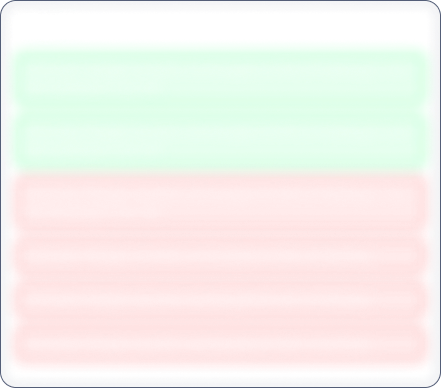Year End Sale 50% off
SK Minerals & Additives

No Data Available
Investor Sentiment
SK Minerals & Additives Share price and Fundamental Analysis
Key Metrics
Included In
Stock Returns
Stock Heatmap

No Stocks
Smart Score

Unlock Smart Score
See Detailed Analysis & Insights


Unlock Insights
See Detailed Analysis & Insights
Technicals
Returns Calculator
If you would have investedResearch Report
No Research Report
Corporate Action

No Data Available
Financials
Key Ratios
ROE
Avg ROE (3 Yrs) : NaN%
ROCE
Avg ROCE (3 Yrs) : NaN%
ROA
Avg ROA (3 Yrs) : NaN%
NPM
Avg NPM (3 Yrs) : NaN%
Dividend History
5 Year FactSheet
Documents

No Data Available
News
SK Minerals & Additives Management and History
Company Management


Unlock Management Data
See Detailed Analysis & Insights
Company History
SK Minerals & Additives Limited was originally incorporated as 'SK Minerals & Additives Private Limited', dated February 10, 2022, issued by the Registrar of Companies, Chandigarh. Prior to incorporation of the Company, the promoters were engaged in the business of trading and manufacturing of various chemicals & minerals catering to various industries such as Food and Bakery, Animal Feed, Plywood, and Petroleum under the name M/s S.K. Minerals', a proprietorship concern. Subsequently, Company converted into a public limited from private limited, to which the name of the Company has changed from SK Minerals & Additives Private Limited' to SK Minerals & Additives Limited' and a fresh Certificate of Incorporation was issued by the Registrar of Companies, Chandigarh on December 17, 2024.
The Company is engaged in the manufacturing and trading of Chemicals & Animal feed Supplements. Key products include chelated minerals such as Glycinates and EDTAs (Ethylenediaminetetraacetic Acid) in variants of Zinc, Copper, and Magnesium; essential Mineral Mixtures; Calcium Propionate; Ferric Pyrophosphate; Technical Grade Urea; Virgin Base Oil; Magnesium Oxide; By-Pass Fat and other allied specialty chemicals. These products serve critical functions in various applications, particularly in the food and bakery, animal feed, petroleum, plywood, and other allied industries. '
The Company operate through a flexible business model that integrates domestic trading, imports, and in-house production. The Company commenced operations as a proprietorship under the name M/s S.K. Minerals, initially focusing trading of goods on a select range of feed preservatives and ingredients in 2010. In year 2012-15, it gradually expanded into animal feed division by launching mineral-based feed additives. In 2016-19, it diversified the business through trading in specialty chemicals, including technical- grade urea, melamine, magnesium oxide, enabling to serve industrial customers across plywood and petroleum.
The Company commenced production facility by expanding the infrastructure and adding new products such as zinc/copper glycinate and magnesium glycinate in 2021-22. In 2022, Company tookover the business of M/s S.K. Minerals, the Proprietorship Firm vide Business Conversion Agreement dated November 24, 2022.
The Company is planning an IPO of 32,40,000 equity shares of Rs 10 each through fresh issue.
SK Minerals & Additives Share Price
SK Minerals & Additives share price reflects investor sentiment toward the company and is impacted by various factors such as financial performance, market trends, and economic conditions. Share price is an indicator which shows the current value of the company's shares at which buyers or sellers can transact.
SK Minerals & Additives Market Cap
Market capitalization of SK Minerals & Additives indicates the total value of its outstanding shares. Marketcap is calculated by multiplying share price and outstanding shares of the company. It is a helpful metric for assessing the company's size and market Valuation. It also helps investors understand how SK Minerals & Additives is valued compared to its competitors.
SK Minerals & Additives PE Ratio
SK Minerals & Additives PE ratio helps investors understand what is the market value of each stock compared to SK Minerals & Additives 's earnings. A PE ratio higher than the average industry PE could indicate an overvaluation of the stock, whereas a lower PE compared to the average industry PE could indicate an undervaluation.
SK Minerals & Additives PEG Ratio
The PEG ratio of SK Minerals & Additives evaluates its PE ratio in relation to its growth rate. A PEG ratio of 1 indicates a fair value, a PEG ratio of less than 1 indicates undervaluation, and a PEG ratio of more than 1 indicates overvaluation.
SK Minerals & Additives ROE (Return on Equity)
Return on Equity (ROE) measures how effectively SK Minerals & Additives generates profit from shareholders' equity. A higher ROE of more than 20% indicates better financial performance in terms of profitability.
SK Minerals & Additives ROCE (Return on Capital Employed)
Return on Capital Employed (ROCE) evaluates the profitability of SK Minerals & Additives in relation to its capital employed. In simple terms, ROCE provides insight to investors as to how well the company is utilizing the capital deployed. A high ROCE of more than 20% shows that the business is making profitable use of its capital.
SK Minerals & Additives Total Debt
Total debt of SK Minerals & Additives shows how much the company owes to either banks or individual creditors. In simple terms, this is the amount the company has to repay. Total debt can be a very useful metric to show the financial health of the company. Total debt more than equity is considered to be a bad sign.
SK Minerals & Additives Debt to Equity Ratio
The Debt-to-Equity (DE) ratio of SK Minerals & Additives compares its total debt to shareholders' equity. A higher Debt to Equity ratio could indicate higher financial risk, while a lower ratio suggests that the company is managing its debt efficiently.
SK Minerals & Additives CAGR (Compound Annual Growth Rate)
CAGR shows the consistent growth rate of SK Minerals & Additives over a specific period, whether it is over a month, a year, or 10 years. It is a key metric to evaluate the company’s long-term growth potential. Main metrics for which CAGR is calculated are net sales, net profit, operating profit, and stock returns.
SK Minerals & Additives Technical Analysis
Technical analysis of SK Minerals & Additives helps investors get an insight into when they can enter or exit the stock. Key components of SK Minerals & Additives Technical Analysis include:
Support Levels (S1, S2, S3)
There are usually multiple support levels, but the main support levels for a stock are S1, S2, S3. Support levels indicate price points where stock might get support from buyers, helping the stock stop falling and rise.
Resistance Levels (R1, R2, R3)
There are usually multiple resistance levels, but the main resistance levels for a stock are R1, R2, R3. Resistance levels represent price points where SK Minerals & Additives shares often struggle to rise above due to selling pressure.
SK Minerals & Additives Dividends
Dividends refer to the portion of the company’s profits distributed to its shareholders. Dividends are typically paid out in cash and reflect SK Minerals & Additives ’s financial health and profitability.
SK Minerals & Additives Bonus Shares
Bonus shares are usually given by companies to make the stock more affordable, increase liquidity, boost investor confidence, and more.
SK Minerals & Additives Stock Split
Stock split increases the number of its outstanding shares by dividing each existing share into multiple shares. When the company offers a stock split, the face value of the stock reduces in the same proportion as the split ratio.
SK Minerals & Additives Financials
The financials of SK Minerals & Additives provide a complete view to investors about its net sales, net profit, operating profits, expenses, and overall financial health. Investors can analyze financial data to assess the company’s stability and also understand how the company has been growing financially.
SK Minerals & Additives Profit and Loss Statements
The profit and loss statement of SK Minerals & Additives highlights its net sales, net profit, total expenditure, and operating profits in the current financial year. This Profit and Loss statement is crucial for evaluating the profitability and financial stability of SK Minerals & Additives .
SK Minerals & Additives Balance Sheet
The balance sheet presents a snapshot of SK Minerals & Additives ’s assets, liabilities, and equity of shareholders, providing insights into the financials of the company.
SK Minerals & Additives Cashflow Statements
Cashflow statements track the company's cash inflows and outflows over a period. It is an essential tool for understanding how well the company manages its liquidity and finances.


